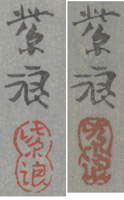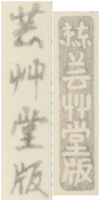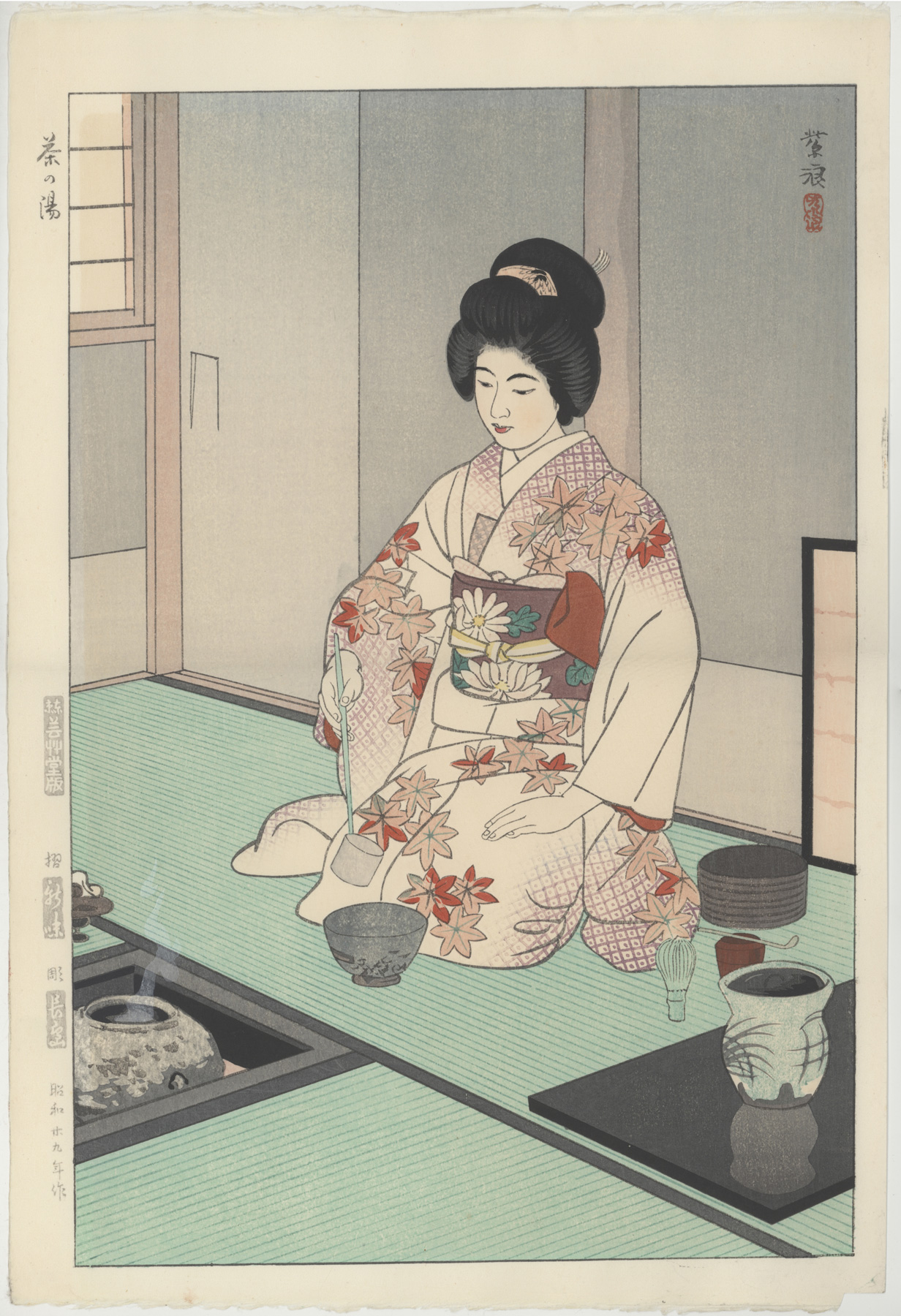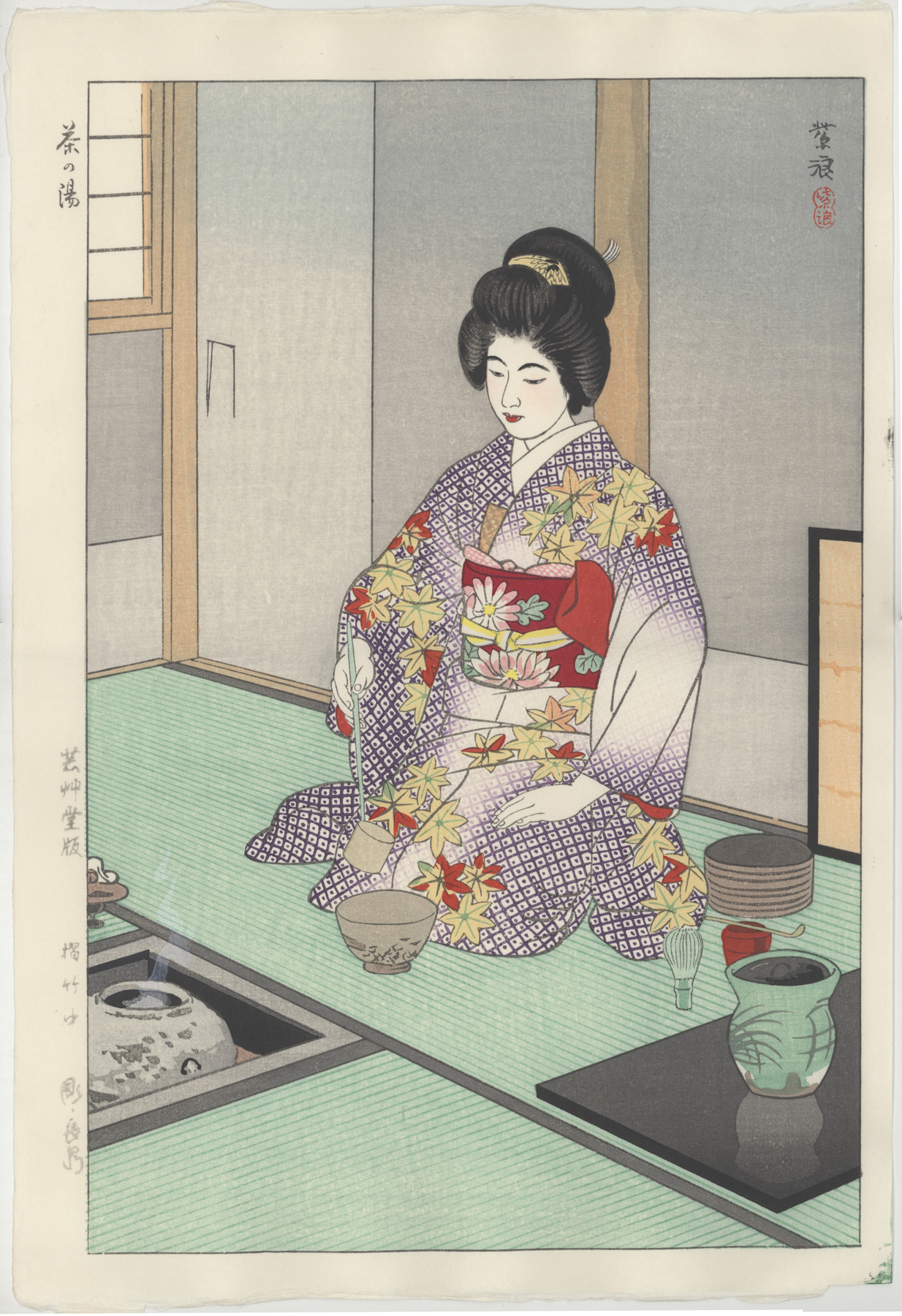About This Print
Two editions, the on the left an early or first edition and the print on the right a more recent, possibly 21st century, edition.The Tea Ceremony
Source: Artelino website http://www.artelino.com/articles/japanese_tea_ceremony.asp
The cult of the tea ceremony spread from China to Japan as early as in the eight century, but it did not become popular until the late 16th century, when during the Momoyama period a refined way of manners and customs developed among the aristocratic and samurai classes.
The great master of the Japan tea ceremony was Sen no Rikyu who lived from 1522 to 1591. Since then the art of sado has been handed down from generation to generation. Sado is practiced in different schools, with each school having slightly different choreographic forms. The main schools are Ura, Omote, and Mushakoji.
Being regarded as an art form of its own, the Japanese tea ceremony had significant impact on other forms of arts and crafts. It was a major force in the development of Japanese porcelain manufacturing.
In today's Japan there are different opinions about the tea ceremony, but most Japanese regard it as part of their cultural heritage. The interest to learn chanoyu as a hobby, is large. But there are also many young Japanese who regard chanoyu as simply boring.
Print Details
| IHL Catalog | #8 and #1178 |
| Title | Tea Ceremony (茶の湯 chanoyu) |
| Series | |
| Artist | Kasamatsu Shirō (1898–1991) |
| Signature |  紫浪 Shirō (left IHL Cat. #1178; right IHL Cat. #8) |
| Seal | Shirō |
| Date | originally published 1954 (Shōwa 29) 昭和 廿九 |
| Edition |  IHL Cat. #1178: no date on print. A later edition, but date unknown. |
| Publisher |  left - IHL Cat. #1178: 芸艸堂 版 Unsōdō han right - IHL Cat. #8: 東京 芸艸堂 版 Tokyo Unsōdō han |
| Printer |  right - IHL Cat. #8: suri Shinmi 摺 新味 (Shinmi Saburō 新味三朗) |
| Carver |  (Nagashima Michio 長嶋道男) right - IHL Cat. #8: hori Nagashima 彫 長嶋 (Nagashima Michio 長嶋道男) |
| Impression | IHL Cat. #8 - excellent IHL Cat. #1178 - excellent |
| Colors | IHL Cat. #8 - excellent IHL Cat. #1178 - excellent |
| Condition | IHL Cat. #8 - excellent - minor toning and mat line IHL Cat. #1178 - excellent |
| Miscellaneous | |
| Genre | shin hanga (new prints) |
| Format | ōban tate-e |
| H x W Paper | IHL Cat. #8 and #1178: 16 x 10 3/4 in. (40.6 x 27.3 cm) |
| H x W Image | IHL Cat. #8 and #1178: 14 3/8 x 9 1/2 in. (36.5 x 24.1 cm) |
| Collections This Print | |
| Reference Literature | Catalogue Raisonné: U-114 as listed in Shiro Kasamatsu - The Complete Woodblock Prints, Dr. Andreas Gund, self-published by the author, 2001 |
8/19/2021



